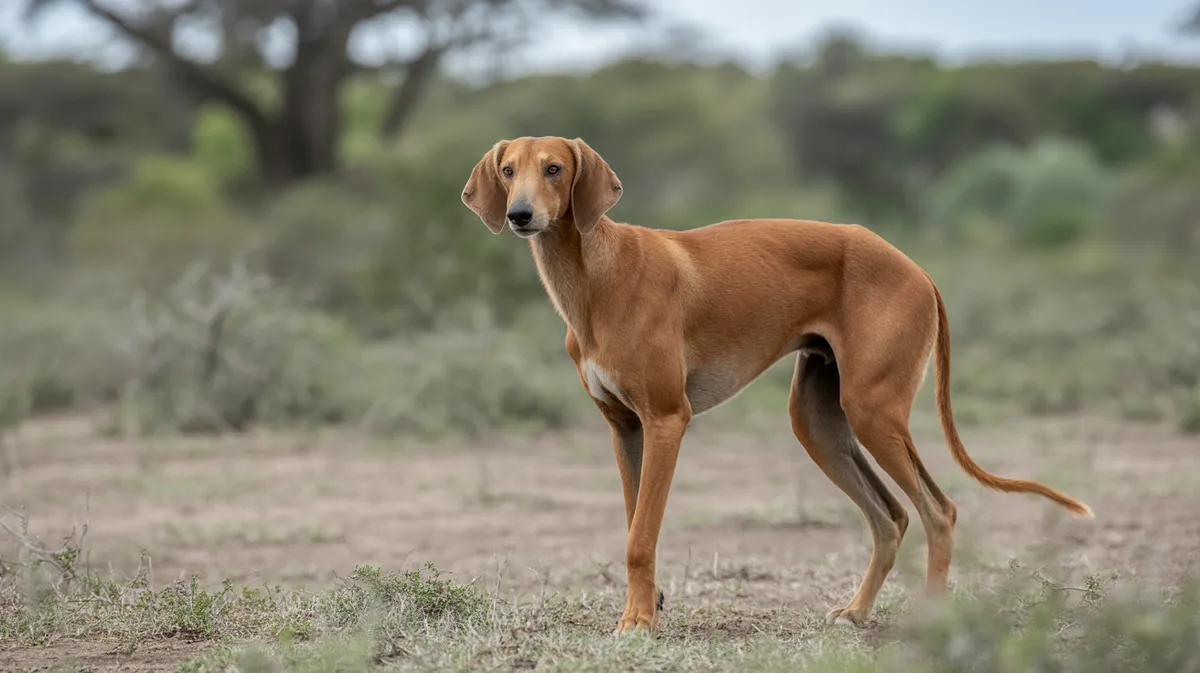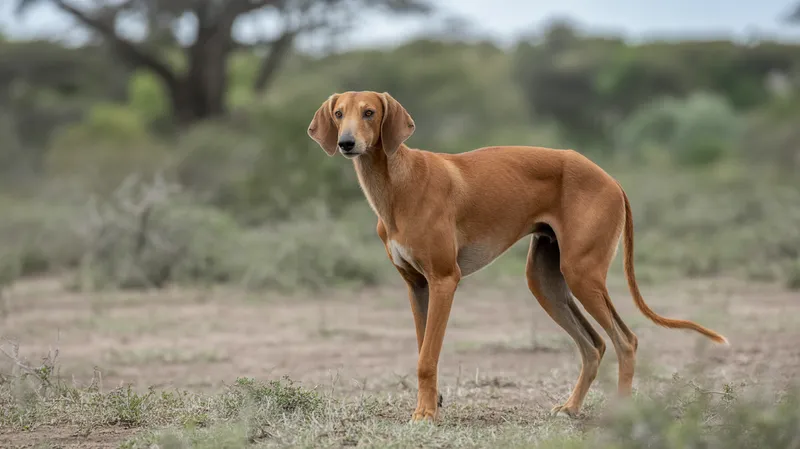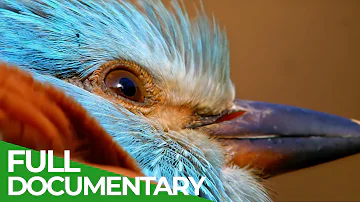
Azawakh
Canis lupus familiaris

Meet the Azawakh
The Azawakh is an elegant and slender sighthound breed originating from the Sahel region of West Africa, notably among the Tuareg, Fula, and other nomadic tribes. Bred primarily for hunting and guarding, Azawakhs are known for their remarkable speed, endurance, and keen eyesight. They possess a short, fine coat and a lean, muscular build, enabling them to thrive in the extreme heat and arid conditions of the Sahara and sub-Saharan savannas. Despite their somewhat reserved nature with strangers, Azawakhs are deeply affectionate and loyal to their human families.
Classification
Mammal
Habitat
Savanna
Diet
Carnivore
Lifespan
12-15 years
Conservation
Least Concern
Weight
15-25 kg
📖Fascinating Facts
Desert Adapted
Azawakhs have evolved to handle the extreme heat and arid conditions of the Sahara and Sahel regions, with minimal body fat and a fine, short coat.
Loyal Guardian
Traditionally, Azawakhs were used as both hunting companions and guardians for livestock and camps by nomadic tribes.
Incredible Speed
Azawakhs are capable of chasing down fleet-footed prey such as gazelles, thanks to their long legs and powerful muscles.
📋Detailed Description
The Azawakh is a medium to large sighthound, typically standing 61–74 cm (24–29 in) at the shoulder and weighing 15–25 kg (33–55 lbs), with males generally larger than females. Its anatomy is characterized by an exceptionally lean, muscular frame, deep chest, and long, fine limbs, which contribute to its remarkable speed and agility—capable of reaching up to 65 km/h (40 mph) in short bursts. The breed’s skin is thin and tightly fitted over prominent musculature and bone, while the coat is short, fine, and comes in a range of colors from fawn to brindle, with or without white markings. Azawakhs have a narrow, elongated head with a long muzzle, almond-shaped eyes, and high-set, triangular ears. Behaviorally, they are highly alert and responsive, with a strong prey drive and keen eyesight, making them adept at detecting and pursuing game across open savanna. Socially, Azawakhs form close bonds with their human families and pack members, often displaying reserved or aloof behavior toward strangers but deep affection and loyalty within their social group. In their native environment, they are both hunters and guardians, working cooperatively in packs to chase down fleet-footed prey such as gazelles and hares. Reproduction typically involves one annual breeding season, with females producing litters of 4–6 puppies after a gestation period of approximately 63 days. Unique adaptations include their ability to withstand extreme heat, low body fat for efficient cooling, and a metabolism suited to sparse, high-protein diets. The Azawakh’s combination of physical and behavioral traits reflects centuries of selective breeding by Sahelian nomads for survival and utility in harsh, arid landscapes.
💡 Did you know?
The Azawakh is one of the few dog breeds that originated and evolved alongside the nomadic peoples of the Sahara Desert, adapting specifically to harsh, hot, and arid climates.
🔬Research & Sources
Wikipedia Summary
The Azawakh is a breed of dog from West Africa. With ancient origins, it is raised throughout the Sahelian zone of Mali, Niger, and Burkina Faso. This region includes the Azawagh Valley for which the breed is named. While commonly associated with the nomadic Tuareg people, the dogs are also bred and owned by other ethnic groups, such as the Peulh, Bella, and Hausa. The Azawakh is more related to the Sloughi than it is to the Saluki.
Last Modified: 4/2/2025
🎭Behavior & Social Structure
Azawakhs are diurnal, most active during the cooler hours of dawn and dusk, aligning with the activity patterns of their prey. They are highly territorial and will patrol their home range, alerting to any unfamiliar presence with a distinctive, deep bark. Hunting is typically conducted in small packs, relying on visual cues to spot and pursue prey at high speed over long distances. Their feeding behavior is opportunistic, consuming small to medium-sized mammals, birds, and occasionally carrion. Social interactions within the pack are structured, with clear dominance hierarchies and ritualized greetings. Azawakhs are known for their sensitivity and strong attachment to their primary caregivers, often displaying separation anxiety if isolated. Rest periods are frequent during the heat of the day, with individuals seeking shade or burrowing into sand to regulate body temperature.
👶Reproduction & Life Cycle
Azawakhs reach sexual maturity at around 12–18 months. Breeding in their native range is often seasonal, coinciding with the end of the dry season when food is more abundant. Courtship involves ritualized play and chasing, with dominant males typically gaining access to receptive females. The gestation period averages 60–63 days, after which the female gives birth to a litter of 4–6 puppies, though litters of up to 8 have been recorded. Puppies are born blind and helpless, opening their eyes at around 10–14 days. Maternal care is intensive during the first month, with weaning beginning at 4 weeks and socialization within the pack starting shortly thereafter. In traditional settings, only the most robust puppies are retained for work or breeding, reflecting the harsh selective pressures of the Sahel.
🛡️Adaptations & Survival
Azawakhs possess several adaptations for survival in the Sahelian environment: their low body fat and fine coat facilitate efficient heat dissipation, while long legs and a deep chest maximize stride length and oxygen intake during high-speed chases. Their metabolism is adapted to irregular feeding, allowing them to thrive on sparse, protein-rich diets. Behavioral adaptations include heightened vigilance and strong territorial instincts, providing protection against predators and intruders. Their social structure supports cooperative hunting and defense, while their reserved temperament minimizes unnecessary energy expenditure in the harsh climate. The breed’s acute vision and rapid acceleration are evolutionary specializations for pursuing swift, elusive prey across open terrain.
🎨Cultural Significance
The Azawakh holds significant cultural value among the Tuareg, Peulh, Bella, and Hausa peoples, where it is regarded as both a status symbol and a vital working companion. Dogs are often given names and adorned with decorative collars or amulets for protection. In Tuareg society, the Azawakh is considered a member of the family, sharing living quarters and participating in daily life. The breed features in local folklore and oral traditions, symbolizing loyalty, courage, and the harsh beauty of the Sahel. Historically, Azawakhs have been used for hunting, guarding camps, and as companions during long migrations.
🔬Recent Research & Discoveries
Recent genetic studies have clarified the Azawakh’s close relationship to the Sloughi, distinguishing it from other sighthounds such as the Saluki. Ongoing research focuses on the breed’s unique physiological adaptations to heat and endurance, with implications for understanding canine athletic performance and thermoregulation. Conservation genetics projects are underway to document and preserve the breed’s genetic diversity, particularly in the face of modernization and crossbreeding. Ethnographic research continues to explore the Azawakh’s role in Sahelian cultures and the impact of socio-economic changes on traditional breeding practices.
🎥Wildlife Videos

Wildlife - The Fascinating World of Wild Animals | Full Series | Free Documentary Nature
Wildlife - The Fascinating World of Wild Animals | Wildlife Documentary Watch 'Ocean Stories - Full Series' here: ...
Free Documentary - Nature

Wildlife Stories: Love is in the Wild | SPECIAL | Free Documentary Nature
Wildlife Stories: Love is in the Wild | Special | Free Documentary Nature Watch 'Wildlife Stories: Talking to Survive' here: ...
Free Documentary - Nature

Wild Asia - Fantastic Creatures of Tian Shan | Free Documentary Nature
Kingdom of the Bears: Masters of Wilderness | Free Documentary Nature Kingdom of the Bears: Asia's Brown Bear Mountains ...
Free Documentary - Nature

America the Beautiful: Wildlife Heartlands | MEGA EPISODE | National Geographic
Under the Volcano - The snowy crests of The High Cascades conceal the most active volcanoes in the Lower 48. Rise of the ...
Nat Geo Animals

Incredible 4K Nature Scenes Narrated By David Attenborough | BBC Earth
Relax with extraordinary 4K nature footage narrated by Sir David Attenborough, the voice of natural history for over 70 years.
BBC Earth

Exploring Nature’s Secrets with David Attenborough (4K Documentary)
Join us to embarks on a breathtaking global journey to explore the natural wonders of our planet. From the vibrant Great Barrier ...
Our World
🌍Habitat Information
The Azawakh typically inhabits Savanna environments. Azawakhs have adapted to their environments with specialized features and behaviors.
Primary Habitat:
Savanna
More detailed habitat information will be available soon.
🛡️Conservation Status
The Azawakh is currently classified as Least Concern. Conservation efforts are crucial for preserving this species for future generations.
Common Threats:
- 🏠Habitat loss and fragmentation
- 🌡️Climate change impacts
- 🎯Hunting and poaching
- 🏭Human-wildlife conflict
⚠️Threats & Conservation Challenges
While the Azawakh is not currently considered at risk globally, several challenges affect its populations. In its native range, threats include habitat loss due to desertification, reduced prey availability, and interbreeding with other local dogs, which may dilute breed characteristics. The increasing adoption of modern livestock protection methods and changing lifestyles among nomadic peoples have also reduced the traditional roles of Azawakhs. In Western countries, small breeding populations and limited genetic diversity pose risks of inherited health issues. Conservation efforts focus on maintaining genetic purity and supporting traditional breeding practices in West Africa.
🔬Scientific Classification
Scientific Name
Canis lupus familiaris
Classification Hierarchy
🔍 About Taxonomic Classification
Taxonomic classification is a hierarchical system used by scientists to classify and organize living organisms based on shared characteristics and evolutionary relationships.
The system moves from broad categories (Kingdom) to increasingly specific ones, with each animal's scientific name typically consisting of its Genus and species.
📝Community Notes
Share your observations and insights about the Azawakh with our community of wildlife enthusiasts.
Join Our Community
Sign in to share your observations and connect with fellow wildlife enthusiasts.
Sign In to ContributeNo community notes yet
Be the first to share your observations about the Azawakh!
Explore Azawakh
Select a tab above to learn more about this amazing animal.
📸Photo Gallery
No photos available for this animal yet.
🌟Discover More Wildlife
Continue your journey of discovery with more fascinating animals from our database
